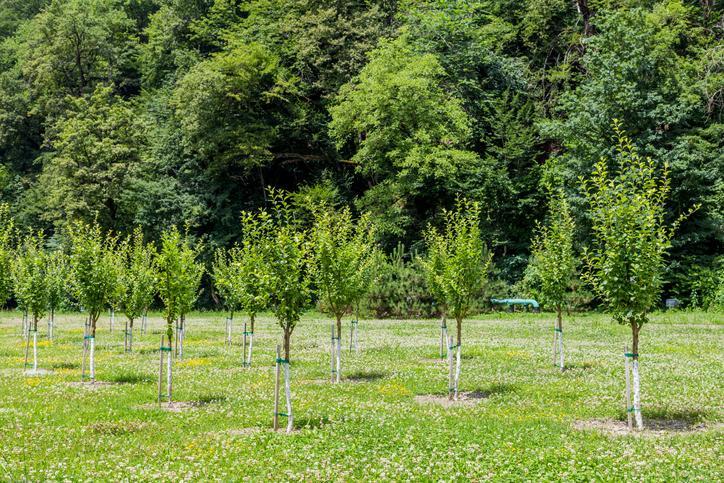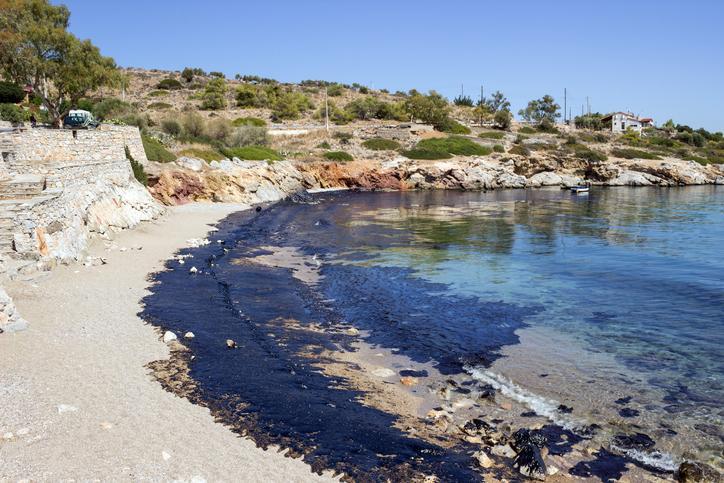Types of Environmental Impact


We should all be aware of environmental impact in a general sense. When we discuss the environmental impact of something, we refer to the consequences certain actions have on the larger environment. Such impacts can be large or small and they do not always have to be negative. Our very existence will have an impact on the environment around us, both living or dead. Even the smallest-seeming action can have great consequences.
Unfortunately, our human environmental impact as a whole is contributing to existential threats such as climate change. For this reason, categorizing the types of environmental impact our planet experiences can help us counteract any negative consequences. At thedailyECO, we provide a summary of these environmental impacts, as well as examples with photos for your reference.
- What is an environmental impact?
- Positive and negative environmental impact
- Direct and indirect environmental impact
- Cumulative or synergistic environmental impact
- Reversible or irreversible environmental impact
- Current or potential impact
- Temporary and permanent impact
- Local and widespread impact
- Examples of environmental impact
- What is an EIA?
What is an environmental impact?
Also known as environmental aspect, an environmental impact is the change to the environment due to group or individual human action. Some further define environmental impact to only specifically include those actions which create environmental imbalance.
Nature will provide its own environmental impact. These can be very small, such as a woodpecker beating the bark off a tree. They can also be very large, such as the eruption of a volcano. Nature generally tends to offset its own environmental impacts, but human interaction has proven itself a threat to the environment. This can be seen in various forms of climate change such as global warming.
The only way to mitigate the negative impact we have on the environment is to understand how our interactions affect it. In the next sections, we look at the different types of environmental impact.
1. Positive and negative environmental impact
As stated in the introduction above, not all environmental impacts are negative. Our collective and individual actions can have a positive impact on the environment. Moreover, it is such positive impacts which will help reduce the negative consequences of pollution and climate change.
Some examples of negative environmental impacts include:
- Pollution
- Overexploitation of natural resources
- Climate change
- Ecosystem degradation
- Deforestation
While many of these negative environmental impacts are irreversible, researchers believe we can mitigate their effects with positive environmental impacts. Examples of positive environmental impacts include:
- Reforestation
- Rewilding
- Use of renewable energies
- Efficient water management
- Recycling materials
These are only a very few examples of the positive and negative impacts on our environment. Many are still to be understood or developed.

2. Direct and indirect environmental impact
The impact we have on the impact may or may not seem immediate, but it can be difficult to know the results. When speaking of a direct environmental impact, we can see a result is appreciated immediately or in a short period of time. Indirect environmental impact is only noticeable after a relatively long period of time. In turn, they can be positive or negative impacts and/or of other types.
Find out how different areas are affected with our article on different types of ecosystems.

3. Cumulative or synergistic environmental impact
While environmental impact can be categorized according to what results occur, it can also be grouped according to how it occurs. For this reason, we can see the following types of environmental impacts:
- Cumulative environmental impact: this is the impact produced by the sum of small impacts over time in the same area. This can be natural, as well as derived from human interaction. Although each individual impact may be relatively inconsequential, the accumulated impact can be severe.
- Synergistic environmental impact: also known as synergism, the synergistic environmental impact occurs when different activities that cause greater environmental impact are taking place together. When two or more individuals work at the same time, their impact is greater than the sum of their separate effects. Since individually these effects can seem insignificant, it often leads to synergistic impacts being overlooked[1].
4. Reversible or irreversible environmental impact
An environmental impact is reversible when the affected area or territory can be recovered thanks to specialized treatments. Such interventions can include:
- Treatment of contaminated water Land restoration
- Reforestation
- Rewilding
An irreversible environmental impact refers to spaces and environmental factors that cannot be recovered. This can be either due to the great magnitude of the impact or because there are no applicable recovery treatments. Examples include:
- Species extinction
- Sea level rise
- Global warming

5. Current or potential impact
As the name implies, a current environmental impact is one that is occurring at the moment. These can generally be more evident, although not always. A potential environmental impact refers to what may occur and it is calculated that it has a high probability of happening in the future. This is especially so if measures are not taken to avoid it.
6. Temporary and permanent impact
When an environmental impact is classified as temporary, it means it could disappear over time and the affected area can recover. A temporary impact would be one with an average duration of between 10 and 19 years. However, those that last for more than 20 years would be considered permanent environmental impacts.
7. Local and widespread impact
If an impact affects only one territory, it is called a local environmental impact. If it spreads out over a large area, affecting spaces far away from where the initial impact occurred, it is classified as a disseminated or widespread environmental impact. As we have stated before, an impact can be of several of these types at the same time. It can be negative, disseminated and permanent, or it can be positive, local and permanent, among for example.

Examples of environmental impact
Below are some examples of environmental impacts:
- Atmospheric pollution: the gases produced by industrial activity, emissions of all the vehicles that circulate in the cities, agricultural as well as the burning of fossil fuels are the origin of much of the pollution of our atmosphere.
- Water pollution: bodies of water are contaminated by discharges from industries and untreated wastewater. Plastic is another major pollutant in water areas, since tons of plastic waste every year ends up in seas and oceans, being especially harmful to aquatic species.
- Soil contamination: activities such as livestock rearing, agriculture or the exploitation of resources deteriorate and contaminate the soil.
- Noise pollution: this mostly occurs in large cities where there is a high concentration of sounds. This pollution is not only harmful to human populations, but it can seriously upset various ecosystems.
- Light pollution: this type of pollution also occurs in large cities, from where it is impossible to appreciate the stars. More than simply harmful the view of a night sky, it can disorientate birds and have other impacts on flora and fauna.
- Loss of biodiversity and species extinction: the loss of ecosystems causes a loss of biodiversity, with some species even becoming extinct. Causes of this biodiversity loss include destruction of habitat and the illegal hunting of animals.
- Deforestation: the overexploitation of the logging industry, as well as the provocation of fires to destroy territories and then allocate them to agriculture or extensive livestock are the main problems that cause deforestation.
See some of the types of environments which are impacted by looking at our article on what are natural regions.
What is an EIA?
An environmental impact assessment (EIA) evaluates the impact that carrying out certain activities can generate or it evaluates the establishment of new infrastructures. Such environmental impact assessments are required by environmental law, although this will depend on the jurisdiction where the action is to take place. The purpose of an EIA is to prevent or mitigate any permanent damage to the environment that may occur.
Unfortunately, environmental impact assessments are vulnerable to abuse. Whether due to bribery, poor management or simple negligence, many companies are able to carry out actions which have detrimental environmental impacts, despite an EIA being carried out. In many cases, this may be because local law does not have sufficiently strict assessment requirements.
While much of the positive environmental impact we need takes place on a global scale, check out the video below with some smaller scale changes you can make to help the environment:

If you want to read similar articles to Types of Environmental Impact, we recommend you visit our Environment (other) category.
1. Cabral, H., Fonseca, V., Sousa, T., & Costa Leal, M. (2019). Synergistic Effects of Climate Change and Marine Pollution: An Overlooked Interaction in Coastal and Estuarine Areas. International journal of environmental research and public health, 16(15), 2737.
https://doi.org/10.3390/ijerph16152737









